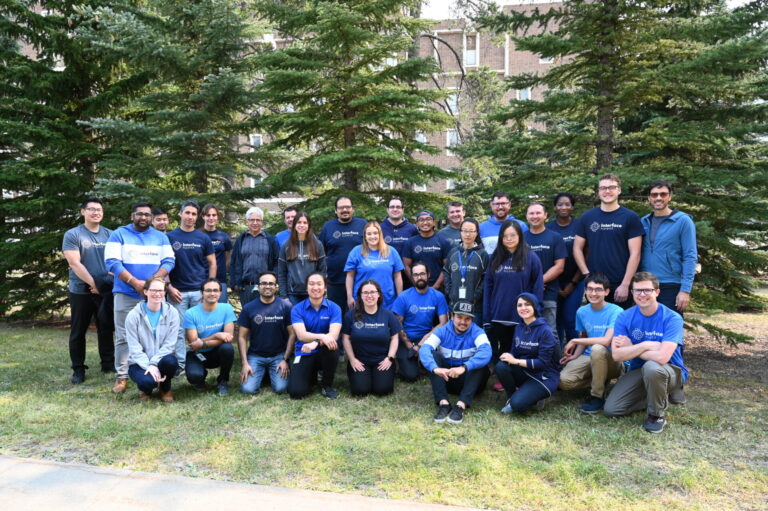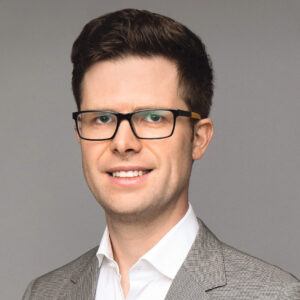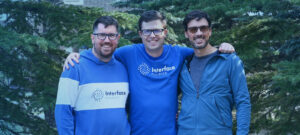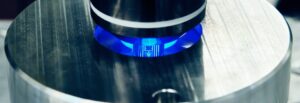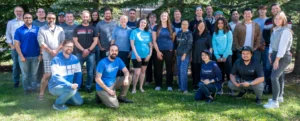1992:
When I was three years old, I moved to Houston Texas where my dad was specializing in microsurgery at MD Anderson Cancer Center. I was three years old at the time. We were there for one year. While I was in Houston, we visited Space Center Houston. I was in love with all the amazing technologies there. I proudly told my parents that I wanted to be a “microtechnologist” when I grew up. I also took apart a vacuum cleaner while it was plugged in, my mom was not happy when she found the parts everywhere.
1995:
My family moved to Calgary via Toronto in 1993. For my grade 3 science fair project my dad and I made a system of pipes to demonstrate the Hagen-Poiseuille equation. Basically showing that the flowrate through a long pipe is proportional to the fourth power of its radius. I had a ton of fun building a system to siphon water through a set of plastic tubes with different diameters. I also managed to flood a good chunk of the gym at my elementary school in the process.
2005-2010:
I showed up to Sir Arthur Curry (SAC) Residence at The University of Victoria in September 2005. I proudly set up my big Power Mac G5 computer, turned on some Jethro Tull and waited to find out who my roommate would be for my first year of university.
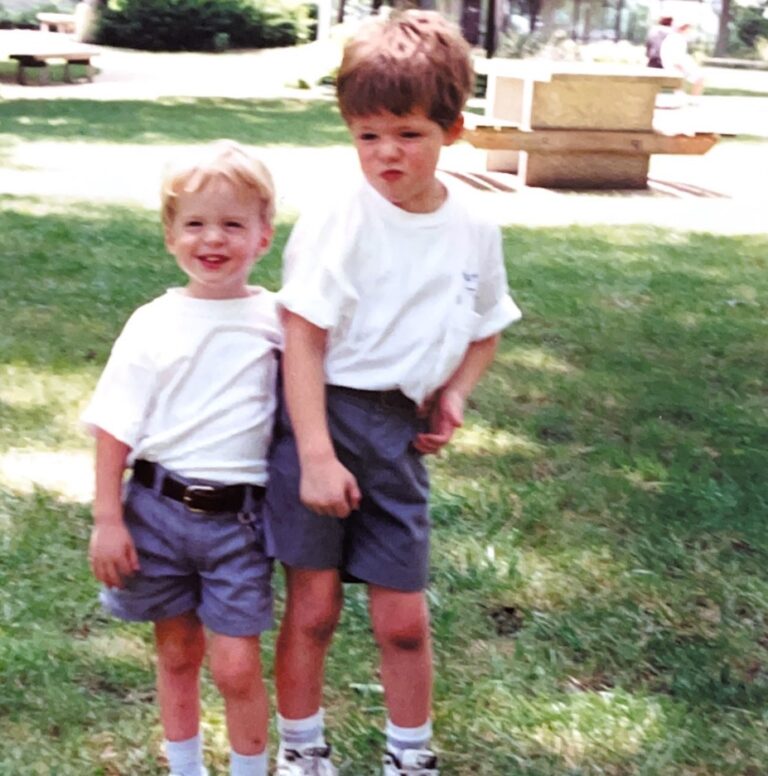
A few hours later, Stuart Kinnear arrived. He was in the music program studying performance in tuba. I was in engineering, planning to be a mechanical engineer. It turned out that we lived only a few blocks away from each other in Calgary but never met each other because we went to different schools. Both of us enjoyed bad 90’s comedy movies and Magic The Gathering cards so we hit it off. Stuart decided that he wanted to have a kitchen and so he moved out after the first semester, but we remained close friends throughout undergrad.
While at UVic, I took up caving with the University of Victoria Caving Club. I went on most of the trip in my first few years and eventually became the President of the club. This was my first experience in a leadership role. I organized trips, made sure that all our insurance was in place with the university, and led trips through caves all around Vancouver Island. We both went on tourist trips (to mapped caves) and mapped new cave passages.
2011-2013:
In 2011 I started an Industrial Engineering course based masters at The University of Toronto. After my first semester of courses, I noticed a bulletin on the board with a familiar name. Prof. David Sinton had his open lecture as part of his interview process for a position as a Prof. at U of T. I went to check it out and after it was over, I stayed to chat with Dave. He asked me if I would consider switching to a MASc (research-based) program. I thought it would be interesting, and joined his research group, switching from Industrial to Mechanical Engineering. I was right.
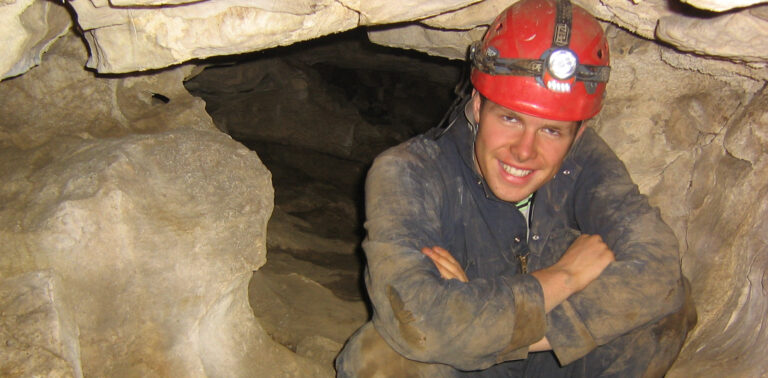
I loved being able to think of new ideas and put them into practice. My first project was to increase the pressure of our microfluidic systems so that we could do more CO2 research. At the time SintonLab was using soft polymer microfluidic chips (PDMS) and hard plastic chips (PMMA) I demonstrated that both of these were not suitable for supercritical CO2 which is a powerful solvent. I worked with other folks in the lab to start fabricating glass microfluidic chips. I was working with such an incredible group of people, most of whom were much better than I at the analytical side of research. I focused more on the practical and became the go to guy to turn wrenches and build things within the Carbon Team. I loved coming up with ideas and working with amazing people like Wen Song and Hossein Fadaei to turn the idea into reality.
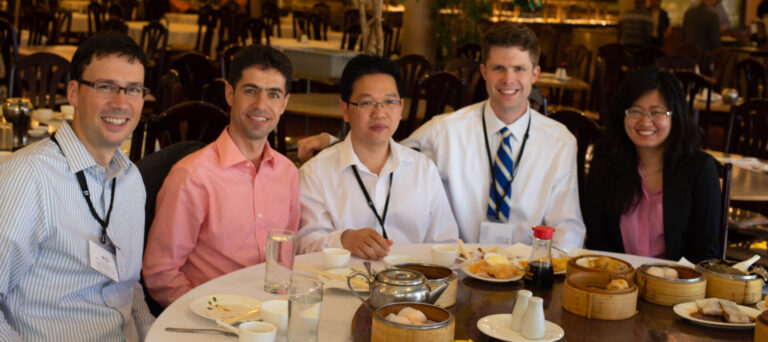
While at U of T, I worked on an exciting project with Suncor Energy to create a reservoir-on-a-chip system to mimic an oil sands reservoir. This system was used to model alkaline steam recovery of bitumen in the steam assisted gravity drainage (SAGD) process. It was exciting work that let me make all sorts of interesting parts in the machine shop and chips in the cleanroom. During one of my trips to Calgary for a conference, I met with Russ Engelman from Suncor to chat over coffee. Little did I know that it was a job interview and I got an offer via email. I was going to Calgary to work in the Sub-Surface New Technology Team at Suncor.
2013-2016:
I moved back to Calgary in June 2013, just after the major floods that hit the city that year. I bonded with my new team at Suncor while cleaning out basements in High-River as part of a company trip to help clean up after the floods.
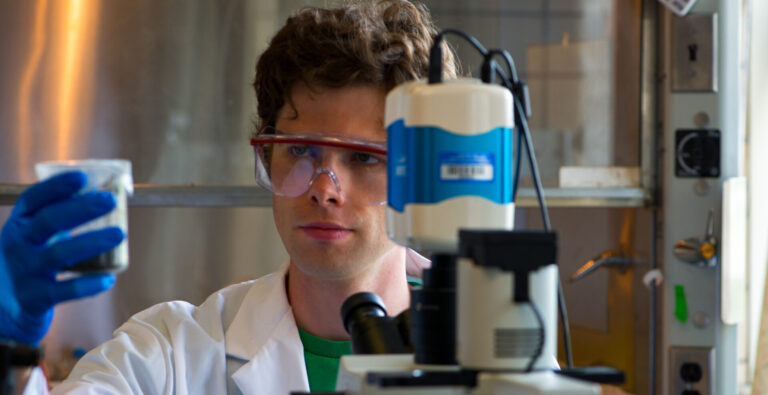
At Suncor I had the opportunity to work on many interesting early-stage technology projects involving all stages of the lifecycle of a SAGD well from enhancing startup, improving production, and winding down production without impacting adjacent wells. The most exciting project that I was part of was the Enhanced Solvent Extraction Incorporating Electromagnetic Heating (ESEIEH) project that Suncor was participating in as part of a consortium with the vendor Harris Corporation. As part of this project, I got to travel around North America visiting the vendors of all the key components of the technology. I learned a lot from the folks I was working with about project management, management of risk, scheduling, and managing collaboration between teams with different company cultures.
While in Calgary, Stuart and I met regularly to play squash, go backcountry skiing, go rock climbing, and play board games. We also took a certificate in Photography at SAIT together which was a skillset that benefited both of us later when we started Interface. After taking some of the photography classes, Stuart and I both started up photography side hustles. Stuart was way better than me at drumming up business and promoting himself. I ended up being an assistant photographer for some of the weddings that he shot. We also volunteered each year together to shoot photos of the Alzheimer’s Run.
While I was at Suncor, the relationship between U of T and Suncor continued. Dave Sinton’s group was advancing the early work that I was part of to look at other SAGD processes including solvents and alcohol additives. I was also exposed to the alternative test to microfluidics, sandbox testing. Sandbox testing consisted of a large steel box filled with oil sands and plumbed up with three miniature wellpairs and thoroughly instrumented with thermocouples. This system was extremely expensive and slow. It really made it clear to me the advantages of microfluidics. At Suncor I was given the opportunity to purchase some lab equipment like a microscope and rheometer to run tests at the MacKay River SAGD facility. I proposed setting up a lab in Calgary to run microfluidic tests, but this never moved forward.
After his undergraduate degree at UVic, Stuart did his MBA and then found his way to the Supply Chain Team at Canadian Natural (CNRL). He worked managing contracts for the largest fleet of completions rigs in North America. Stuart found his niche running business analytics for the supply chain team, making dashboards that pulled together data from disparate sources into one place so that management could make informed decisions more quickly.
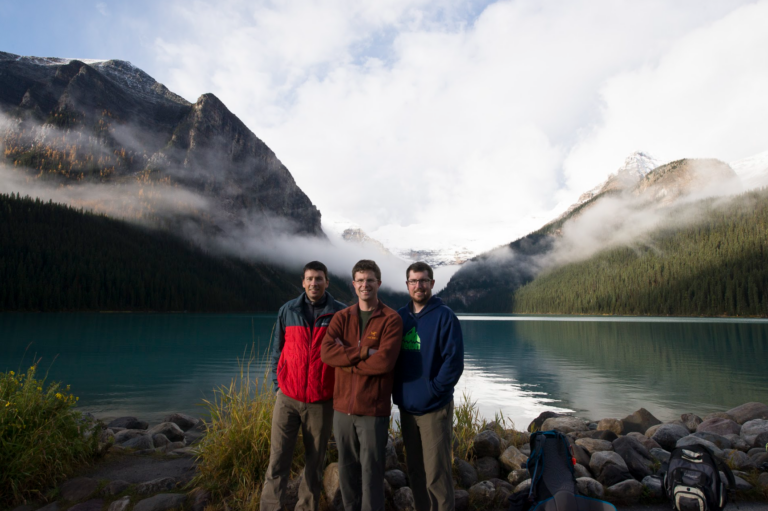
In the spring of 2015, Stuart and I got some food at a food truck in downtown Calgary. I told him about my idea and that we should also get Dave involved. Stuart, Dave and I had a few calls about this idea and started to formulate how to make this a business. None of us had any experience with startups so it was a bumpy process. We went to a bunch of startup pitches and spoke with as many people as we could. The name of the company concept morphed from Petroleum Microfluidics to Oilytics (which my brother rightly pointed out looks like oily ticks), to Interface Fluidics. I knew that I was not the guy to be selling this idea (Stuart was clearly better at this from our experience in photography) so Stuart would be CEO. Dave would be CTO (eventually changed to Executive Technology Advisor) and I would be COO (eventually changed to CTO). We incorporated in September 2015!
In the fall of 2015, we had a good concept of what the company could be. It would be a company focused on using microfluidics to speed up the pace of innovation in the oil sands sector. The most important thing we did during this period was to conduct a market assessment with a local consulting firm. They phoned a number of reservoir engineers in Calgary and determined if there actually was a market for what we were doing. It was very positive. This gave Stuart and I more fuel to make the big decision to quit our jobs.
2016-Present:
After the success of the market assessment and the continued work between Suncor and SintonLab, we had enough evidence to make the leap and quit our jobs. We could not go around drumming up sales until we had left. Stuart and I both had our last day of work on March 11th, 2016 when oil prices were $27/barrel. It was scary but exciting.
Day one of being full-time at Interface, Stuart and I had lined up sales meetings with most of the R&D teams with the oil sands companies in downtown Calgary. It turned out that we were not great at running sales meetings. At the end of one of the meetings a reservoir engineer approached me and told me that we really needed to get better at running a sales presentation. Yikes. We did manage to build some strong relationships with the folks in the Calgary oil and gas industry that are still strong to this day. Day two of the company, Stuart and I participated in the Energy New Venture Pitch Competition. We won third place $10,000! We promptly needed to spend this money on the lawyers to complete the incorporation paperwork we would need to raise money.
Our first project came when Dave put us in touch with Cenovus Energy. They were looking for us to make a physical model to validate their computer simulations. This project gave us the ammunition to start raising money and start building a lab.
Due to family commitments, I relocated to Edmonton during this time. This was not an easy move, but it put me closer to the University of Alberta Nanofab, which we would later use for the majority of our microfluidic chip fabrication. We got a space in the National Research Council Nanotechnology Research Center on the U of A campus. Stuart would remain working from home until we set up our Calgary office in 2017.
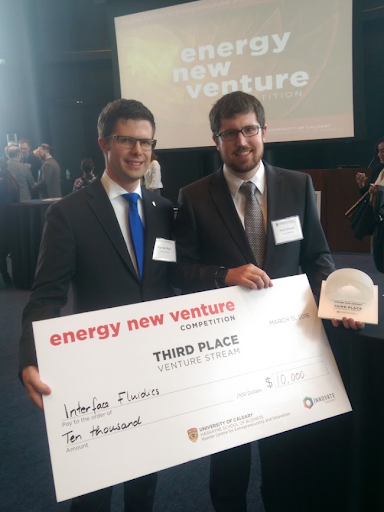
We managed to raise early capital from family members and Calgary area angel investors. It was a lean time going from working at Suncor to no salary, but it was really exciting to be building a company from the ground up. We continued to grow and Stuart made several trips to Houston which elucidated that there was a market for microfluidics in the unconventional space. We developed a product for the frac flowback market together with Stepan Oilfield Solutions. This flowback test brought in significant interest and projects. We grew the company to around 8 people by the fall of 2018.
In fall of 2018, Interface participated in the first cohort of the Techstars Energy program in Oslo Norway, in partnership with Equinor. This was a formative moment in the life of Interface. The Techstars program really encouraged us to set our ambitions bigger, build more processes into how we operate, track more metrics, and mature. Both Stuart and I had newborn babies when we went through Techstars which added to the excitement. At the end of the Techstars program we had secured work with Equinor and would eventually have Equinor as the lead investor in our Series A investment round.
Stuart, Dave, and I saw many extreme highs and lows since starting Interface, but it has been extremely rewarding to build our team to 40 people, raise more than $15MM in investment, and see our technology being adopted throughout the energy industry to solve hard fluids problems. We have seen enhanced oil recovery projects improve their economics, companies find that surfactants are not compatible with the temperature of their reservoirs, and we have screened hundreds of chemical products for dozens of companies around Canada, The United States, Europe, and the Middle East.
Interface is growing and we are now selling hardware and commercializing a suite of PVT tests. The coming few years will be exciting I am sure as we develop tests and equipment that become the standard for fluid measurement in the energy industry.
